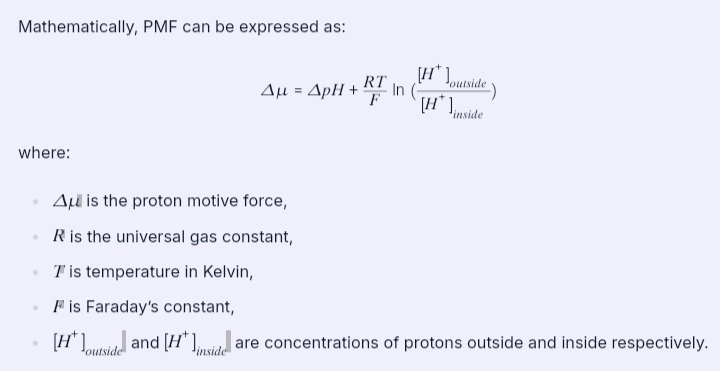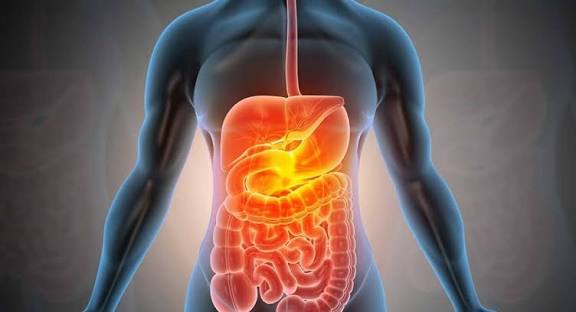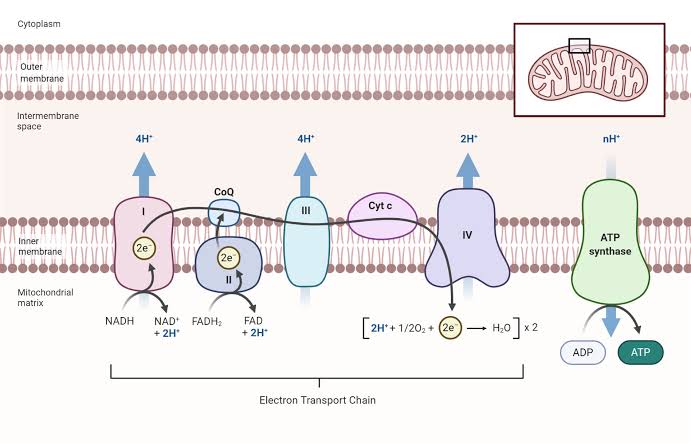
Enzymes Involved in Substrate Level Phosphorylation in Glycolysis and TCA Cycle
1. Substrate Level Phosphorylation in Glycolysis
Glycolysis is a metabolic pathway that converts glucose into pyruvate, generating energy in the form of ATP. Two key enzymes involved in substrate-level phosphorylation during glycolysis are:
- Phosphoglycerate Kinase (PGK): This enzyme catalyzes the conversion of 1,3-bisphosphoglycerate to 3-phosphoglycerate while transferring a phosphate group to ADP to form ATP. The reaction can be summarized as follows: 1,3-bisphosphoglycerate + ADP→3-phosphoglycerate + ATP
- Pyruvate Kinase (PK): This enzyme catalyzes the final step of glycolysis, converting phosphoenolpyruvate (PEP) to pyruvate and transferring a phosphate group from PEP to ADP, resulting in the formation of ATP. The reaction is represented as: Phosphoenolpyruvate + ADP→Pyruvate + ATP
Both PGK and PK are crucial for the generation of ATP through substrate-level phosphorylation during glycolysis.
2. Substrate Level Phosphorylation in the TCA Cycle
The TCA cycle (tricarboxylic acid cycle), also known as the Krebs cycle or citric acid cycle, is another critical metabolic pathway that generates energy through substrate-level phosphorylation. The main enzyme involved in this process within the TCA cycle is:
- Succinyl-CoA Synthetase (also known as Succinate Thiokinase): This enzyme catalyzes the conversion of succinyl-CoA to succinate while simultaneously phosphorylating GDP (or ADP) to GTP (or ATP). The reaction can be summarized as follows: Succinyl-CoA + GDP + Pi→Succinate + GTP + CoA
In some organisms and under certain conditions, ADP can be used instead of GDP, leading to ATP production directly.
Conclusion
In summary, substrate-level phosphorylation occurs at specific steps within both glycolysis and the TCA cycle through the action of specific enzymes. In glycolysis, Phosphoglycerate Kinase and Pyruvate Kinase facilitate ATP production. In the TCA cycle, Succinyl-CoA Synthetase plays a similar role by generating GTP or ATP.
Mobile and Fixed Complexes Involved in the Electron Transport Chain
The electron transport chain (ETC) is a crucial component of cellular respiration, facilitating the transfer of electrons derived from metabolic substrates to molecular oxygen, ultimately generating ATP. The components of the ETC can be categorized into two main types: fixed complexes and mobile carriers.
Fixed Complexes
- Complex I (NADH-Q oxidoreductase): This is the first enzyme complex in the electron transport chain. It catalyzes the transfer of electrons from NADH to coenzyme Q (ubiquinone), while simultaneously pumping protons across the inner mitochondrial membrane.
- Complex II (Succinate dehydrogenase): This complex links the citric acid cycle to the electron transport chain by transferring electrons from succinate to coenzyme Q. Unlike Complex I, it does not pump protons across the membrane.
- Complex III (Quinol-cytochrome c reductase): This complex accepts electrons from reduced coenzyme Q (ubiquinol) and transfers them to cytochrome c, while also contributing to proton translocation across the membrane.
- Complex IV (Cytochrome c oxidase): The final complex in the electron transport chain, it receives electrons from cytochrome c and reduces molecular oxygen to water, completing the electron transport process and pumping additional protons across the membrane.
Mobile Carriers
- Coenzyme Q (Ubiquinone): This lipid-soluble molecule acts as a mobile electron carrier that shuttles electrons between Complex I or II and Complex III.
- Cytochrome c: This is a small heme-containing protein that serves as a mobile carrier transferring electrons between Complex III and Complex IV.
In summary, the fixed complexes involved in the electron transport chain are Complex I, Complex II, Complex III, and Complex IV, while the mobile carriers are Coenzyme Q and Cytochrome c.
Chemiosmotic Theory and Proton Motive Force of Electron Transport Chain
Introduction to Chemiosmotic Theory
The chemiosmotic theory, proposed by Peter Mitchell in 1961, explains how ATP (adenosine triphosphate) is produced in mitochondria during cellular respiration. This theory posits that the energy released from electron transport chains (ETC) is used to pump protons (H+) across a membrane, creating a proton gradient. This gradient generates potential energy that drives the synthesis of ATP through ATP synthase.
Structure of the Electron Transport Chain
The electron transport chain is located in the inner mitochondrial membrane in eukaryotes and the plasma membrane in prokaryotes. It consists of a series of protein complexes (Complex I to IV) and mobile electron carriers such as ubiquinone (coenzyme Q) and cytochrome c. As electrons are transferred through these complexes, they undergo redox reactions, releasing energy.
Mechanism of Proton Pumping
- Electron Transfer: Electrons derived from NADH and FADH2 enter the ETC at different points. NADH donates electrons to Complex I, while FADH2 donates them to Complex II.
- Energy Release: As electrons move through the complexes, they lose energy at each step. This energy is harnessed by the complexes to pump protons from the mitochondrial matrix into the intermembrane space.
- Proton Gradient Formation: The pumping of protons creates an electrochemical gradient across the inner mitochondrial membrane, characterized by a higher concentration of protons outside than inside the matrix. This gradient represents stored potential energy known as proton motive force (PMF).
Proton Motive Force (PMF)
The proton motive force is defined as the force that promotes movement of protons across membranes against their concentration gradient. It comprises two components:
- Chemical Gradient: The difference in proton concentration across the membrane.
- Electrical Gradient: The difference in charge due to unequal distribution of protons.
Mathematically, PMF can be expressed as:

ATP Synthesis via ATP Synthase
The stored energy in PMF drives ATP synthesis when protons flow back into the mitochondrial matrix through ATP synthase, a multi-subunit enzyme complex embedded in the inner membrane. As protons pass through ATP synthase:
- Rotation Mechanism: The flow causes parts of ATP synthase to rotate.
- Catalysis: This mechanical motion facilitates the conversion of ADP and inorganic phosphate (Pi) into ATP.
This process exemplifies oxidative phosphorylation, where oxygen serves as the final electron acceptor at Complex IV, forming water when it combines with electrons and protons.
Conclusion
In summary, chemiosmotic theory elucidates how energy from electron transport chains leads to ATP production via a proton gradient established by active proton pumping across membranes. The resulting proton motive force not only drives ATP synthesis but also plays critical roles in various cellular processes.
Calculation of ATP Generated by NADH and FADH2
To calculate the number of ATP generated by NADH and FADH2 during cellular respiration, we need to understand their roles in the electron transport chain (ETC) and how they contribute to ATP production.
1. Role of NADH in ATP Production: NADH is a key electron carrier that is produced during various metabolic processes, including glycolysis, the conversion of pyruvate to acetyl CoA, and the Krebs cycle. Each molecule of NADH can generate approximately 2.5 ATP when it donates electrons to the ETC.
- Glycolysis: Produces 2 NADH, contributing to 2 x 2.5 = 5 ATP.
- Decarboxylation of Pyruvate: Produces 2 NADH from two molecules of pyruvate, contributing to another 2 x 2.5 = 5 ATP.
- Krebs Cycle: Each turn produces 3 NADH per acetyl CoA. Since each glucose molecule yields two acetyl CoA, this results in a total of 6 NADH from the Krebs cycle, contributing to 6 x 2.5 = 15 ATP.
Total ATP from NADH:
- Glycolysis: 5 ATP
- Decarboxylation of Pyruvate: 5 ATP
- Krebs Cycle: 15 ATP
Adding these together gives: Total from NADH = 5 + 5 + 15 = 25 ATP
2. Role of FADH2 in ATP Production: FADH2 is another electron carrier that is produced mainly during the Krebs cycle. Each molecule of FADH2 generates approximately 1.5 ATP when it donates electrons to the ETC.
- Krebs Cycle: The Krebs cycle produces a total of 2 FADH2 per glucose molecule (one for each acetyl CoA). This contributes to: Total from FADH2 = 2 × 1.5 = 3 ATP
Final Calculation: Now we can summarize the total number of ATP generated by both NADH and FADH2:
- Total from NADH: 25 ATP
- Total from FADH2: 3 ATP
Thus, the overall total for both carriers is: Total = NADH + FADH2 = 25 + 3 = 28 ATP
In conclusion, when calculating the contributions from both NADH and FADH2 during aerobic respiration, we find that they generate a combined total of 28 ATP.
Poisons that Inhibit Complex I and IV of the Electron Transport Chain
The electron transport chain (ETC) is a crucial component of cellular respiration, located in the inner mitochondrial membrane. It consists of several complexes (I-IV) that facilitate the transfer of electrons from electron donors to electron acceptors, ultimately leading to ATP production through oxidative phosphorylation. Inhibitors or poisons that target specific complexes can disrupt this process, leading to decreased ATP synthesis and increased production of reactive oxygen species.
Inhibition of Complex I
Complex I, also known as NADH:ubiquinone oxidoreductase, is the first enzyme complex in the ETC. It catalyzes the transfer of electrons from NADH to ubiquinone (coenzyme Q), coupled with the translocation of protons across the mitochondrial membrane. Several poisons inhibit Complex I:
- Rotenone: This is a naturally occurring pesticide that inhibits Complex I by binding to its ubiquinone-binding site. By blocking electron transfer from NADH to ubiquinone, rotenone effectively halts ATP production and increases reactive oxygen species due to incomplete reduction of oxygen.
- Amytal: Similar to rotenone, amytal (a barbiturate) also inhibits Complex I by binding at the same site as rotenone. Its action leads to reduced ATP synthesis and can induce cell death if exposure is prolonged.
- MPP+ (1-methyl-4-phenylpyridinium): This neurotoxin selectively affects dopaminergic neurons and inhibits Complex I by entering cells via dopamine transporters and subsequently disrupting mitochondrial function.
Inhibition of Complex IV
Complex IV, also known as cytochrome c oxidase, is responsible for transferring electrons from cytochrome c to molecular oxygen, forming water in the process. Inhibition of this complex can have severe consequences for cellular respiration:
- Cyanide: Cyanide ions bind tightly to the ferric form of heme a3 within cytochrome c oxidase, preventing it from reducing oxygen to water. This inhibition leads to a rapid cessation of aerobic metabolism and can be fatal within minutes due to hypoxia.
- Carbon Monoxide (CO): Carbon monoxide competes with oxygen for binding sites on cytochrome c oxidase. Even at low concentrations, CO can significantly impair cellular respiration by inhibiting oxygen utilization in tissues.
- Azide: Sodium azide acts similarly to cyanide by binding to cytochrome c oxidase and inhibiting its activity. Azide poisoning can lead to metabolic acidosis and cellular hypoxia due to disrupted electron transport.
- Hydrogen Sulfide (H2S): H2S inhibits Complex IV by binding with high affinity to cytochrome c oxidase, effectively blocking electron transfer and leading to cellular energy failure.
The inhibition of either Complex I or IV has profound effects on cellular metabolism, leading not only to decreased ATP production but also contributing to increased oxidative stress due to impaired mitochondrial function.
The understanding of these inhibitors is crucial for both toxicology and pharmacology since they provide insights into mitochondrial dysfunctions associated with various diseases, including neurodegenerative disorders and ischemic conditions.
Functions of Uncouplers and Oligomycin in Inhibiting the Electron Transport Chain (ETC)
1. Uncouplers
Uncouplers are compounds that disrupt the coupling between electron transport and ATP synthesis in mitochondria. They achieve this by allowing protons to re-enter the mitochondrial matrix without passing through ATP synthase, effectively dissipating the proton gradient that is essential for ATP production. This process is known as mitochondrial uncoupling.
- Mechanism of Action: Uncouplers, such as 2,4-dinitrophenol (DNP) and thermogenin (UCP1), facilitate the movement of protons across the inner mitochondrial membrane. By doing so, they bypass ATP synthase, which normally uses the proton gradient to convert ADP and inorganic phosphate into ATP. As a result, while electrons continue to flow through the ETC and oxygen consumption remains high, ATP production decreases significantly.
- Consequences: The primary consequence of uncoupling is an increase in metabolic rate as cells attempt to compensate for reduced ATP levels by oxidizing more substrates. This can lead to increased heat production (thermogenesis) but also results in inefficiency in energy utilization. In excessive amounts, uncouplers can cause cellular damage due to elevated reactive oxygen species (ROS) generation.
2. Oligomycin
Oligomycin is a specific inhibitor of ATP synthase, which plays a crucial role in oxidative phosphorylation within the ETC.
- Mechanism of Action: Oligomycin binds to the FO subunit of ATP synthase, blocking its proton channel. This inhibition prevents protons from flowing back into the mitochondrial matrix through ATP synthase, thereby halting ATP synthesis from ADP and inorganic phosphate.
- Consequences: The inhibition of ATP synthesis by oligomycin leads to a significant reduction in electron flow through the ETC because the buildup of protons in the intermembrane space creates a strong electrochemical gradient that cannot be utilized for ATP production. Although electron transport continues at a reduced rate due to some degree of proton leak or uncoupling via other mechanisms, overall cellular respiration efficiency declines sharply. Additionally, oligomycin administration can lead to lactic acidosis due to increased anaerobic metabolism as cells switch from aerobic respiration to glycolysis for energy production.
In summary, both uncouplers and oligomycin inhibit effective oxidative phosphorylation but do so via different mechanisms—uncouplers dissipate the proton gradient necessary for ATP synthesis while oligomycin directly inhibits ATP synthase activity.







